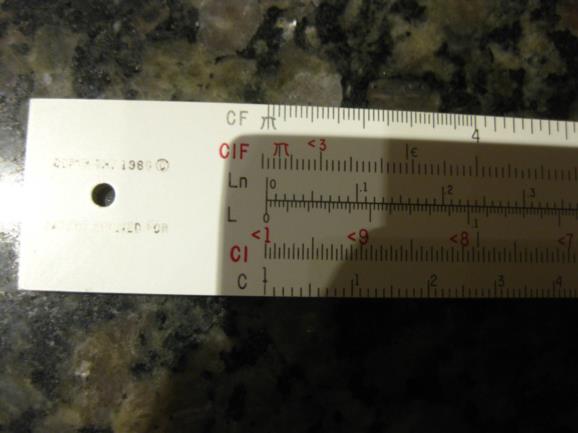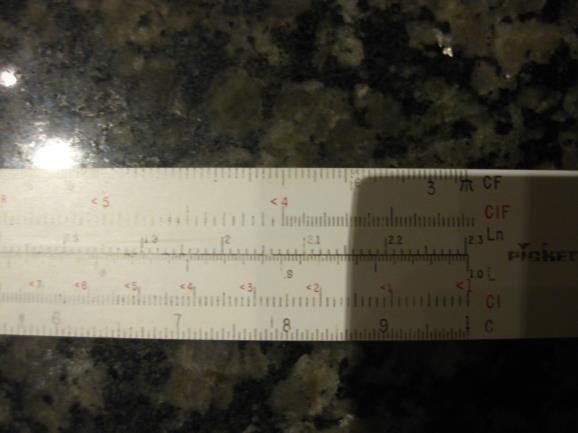
NavList:
A Community Devoted to the Preservation and Practice of Celestial Navigation and Other Methods of Traditional Wayfinding
From: Gary LaPook
Date: 2016 Oct 28, 22:20 -0700
The natural log scale, "Ln," plots as evenly spaced marks when read against the "C" scale, just like the common log scale "L," that has evenly space marks, see attached photos. The Ln scale starts at "0" at the left index and ends at 2.303 at the right index because Ln (1) =0 and Ln(10) = 2.303.
On the photos I attached the Ln scale is directly above the L scale.
These are from my Pickett n 3-T slide rule.
The L scale starts at "0" at the left indes and "1" at the right index because L(1) = 0 and L(10) = 1.
gl
===========================================
Re: Traditional navigation by slide rule
From: Bob Goethe
Date: 2016 Oct 28, 12:59 -0700
I see that Excel 2013 has an LN() function available to it...but the flavor of Visual Basic which I have integrated with my graphics program, CorelDraw, does not support this function per se.
I do see that there is a derived function that Corel supports that looks like this:
Logarithm to base N:
LogN(X) = Log(X) / Log(N)
I don't (yet) know enough about natural logarithms to know how, if at all, this "LogN()" relates to Excel's "LN()".
Presumably if need be, I could use Excel to generate a list of coordinates where I would want to lay down hash marks for a scale. But getting Corel to do it directly would be more straightforward...if Corel can do it on its own at all, that is.
I do see that https://www.antiquark.com/sliderule/sim/n3t/virtual-n3-t.html illustrates an Ln scale, and even lets one play around with it. That will give me an idea of the layout for the scale I should come up with if I can figure out what to feed to an equation to generate it.
I think before I get into adding a scale to my slide rule, I am going to have to go back to school on logarithms, so to speak. The last time I worked with them was 45 years ago.
Gary, could you work through one rhumb line problem from beginning to end using your equations, so that I have a model to follow as I try and sort out how to do this myself? It will help me spot elementary errors if I know what the right answer should be to a particular calculation.
Thanks so much,
Bob









